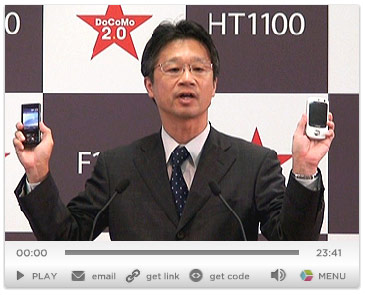Sharp Develops Multi-Touch LCD
Sharp Corporation has announced a new proprietary “System LCD” equipped with touch screen and scanner functions. The company claims to have successfully embedded an optical sensor, used in devices like scanners, in each pixel of the LCD panel. This technology eliminates the need for films, resulting in a thin clear screen display compared to conventional touch screens. Sample shipments will begin in September of this year, with volume production slated to start next spring.


 DoCoMo held a well attended presser on Thursday afternoon unveiling two new smartphones, the
DoCoMo held a well attended presser on Thursday afternoon unveiling two new smartphones, the